The most widely attended self-help program for alcoholism recovery is the Alcoholics Anonymous (AA) twelve-step program. People who struggle with addictions of all kinds have found support and help in recovery. Families and friends of loved ones with addiction have also benefited from a variety of 12 step programs. Learn more about the steps and how it supports people through recovery.
Step 1: Admit Powerlessness Over Addiction
Change is not possible until a person accepts the current way of living is not sustainable. Healing begins when one admits the necessity for change.
Step 2: Believe a Greater Power Can Restore Sanity
Life comes with variable stresses but a higher power that cares about a person’s wellbeing can take the onus of control away from the individual which opens the door for the next steps.
Step 3: Turn Will to Care of God as One Understands Him
People who struggle with this step wrestle with controlling the outcomes of one’s life. Spirituality comes in many shapes and forms which is important to remember on this personal journey of recovery.
Step 4: Make a Personal Inventory
Creating a list of resentments, people harmed, character deficits and assets opens the door for honest reflection on the past. Doing this step can support one to feel free of secrets which leads to greater self awareness.
Step 5: Admission of Wrongs to Others
A sponsor, coach or other person can listen without judgment while supporting a person to be open and honest about addiction.
Step 6: Ready for God to Remove Character Defects
This step helps a person open up to change by releasing oneself of defects which are holding a person back from progress in recovery.
Step 7: Ask Him to Remove Shortcomings
Asking God or a Higher Power to remove character deficits builds understanding and humility of one’s own powerlessness over addiction.
Step 8: List People Harmed and Be Willing to Make Amends
Through acknowledgement of pain caused, forgiveness can begin for oneself and others by taking ownership of one’s behavior and making amends.
Step 9: Make Amends to Others
Making amends starts with a list of people harmed (created in Step 8) which can include restitution for financial wrongdoing or changing one’s behavior.
Step 10: Make an Inventory and Admit When Wrong
Daily examination of one’s behavior is important in allowing a person to engage in self-reflection by noticing wrongs as they come up to fix the situation without resentment and anger which can trigger a relapse.
Step 11: Practice Prayer and Meditation to Improve One’s Relationship with a Higher Power
Regular attendance at church, daily meditation or prayer and reading AA literature are examples of deepening one’s daily spiritual connection to build a positive way of living.
Step 12: Carry the Message to Others and Continue to Live the Principles
Sponsorship, helping at meetings or serving in some way builds on all the principles of AA which supports others in positive personal growth.
The Villa Treatment Center provides treatment and resources for individuals struggling with addiction. Call today to find out how to get started on the road to recovery.

